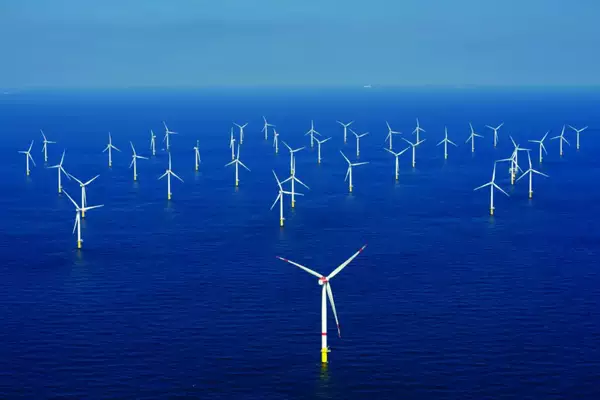The government has recently released draft norms for Viability Gap Funding (VGF) aimed at promoting the development of offshore wind energy projects.
Overview of the Draft Funding Norms:
- Objective: To fund the development of 1,000 MW of offshore wind energy projects by the end of Fiscal Year 2032.
- Total Outlay: ₹6,853 crore.
- Project Locations: Off the coast of Gujarat and Tamil Nadu.
- Implementation:
- Ministry of New and Renewable Energy (MNRE) through the Solar Energy Corporation of India (SECI).
- The National Institute of Wind Energy (NIWE) will provide technical support for installation and commissioning.
Scheme Background:
- VGF Support: Designed to address high costs and operational challenges associated with offshore wind energy projects.
- National Offshore Wind Energy Policy: Issued in 2015, aims to explore the potential within India’s exclusive economic zone (EEZ).
Importance of Offshore Wind Energy:
- Cost Comparison:
- Offshore wind projects are about four times more expensive per GW as compared to onshore projects.
- Costs are driven by high-maintenance requirements and underwater infrastructure.
- Benefits:
- Higher plant load factor (40-45%) compared to onshore (25-30%).
- Utilizes sea area, mitigating land availability issues.
Offshore Wind Energy Potential in India:
- Geographical Advantage: India’s 7,600 km coastline and large EEZ offer substantial potential.
- Significance:
- Critical for achieving the renewable energy target of 500 GW installed capacity by 2030.
- Land Availability: Offshore wind energy helps address land scarcity issues.
Challenges:
- High Costs: Offshore wind turbines have a higher cost per MW compared to onshore turbines due to the need for stronger structures, foundations, and underwater infrastructure
- Issues with corrosion and potential negative impacts on marine biodiversity.
Ref: Source
| UPSC IAS Preparation Resources | |
| Current Affairs Analysis | Topperspedia |
| GS Shots | Simply Explained |
| Daily Flash Cards | Daily Quiz |
Frequently Asked Question:
What is the objective of the draft funding norms for offshore wind energy?
The objective is to develop 1,000 MW of offshore wind energy projects by the end of Fiscal Year 2032.
What is the total funding outlay for these offshore wind projects?
The total funding outlay is ₹6,853 crore for the projects.
Which ministry is responsible for implementing these offshore wind projects?
The Ministry of New and Renewable Energy (MNRE) is implementing the projects through the Solar Energy Corporation of India (SECI).
Why are offshore wind projects more expensive than onshore projects?
Offshore wind projects are costlier due to high-maintenance requirements, underwater infrastructure, and robust structures needed for installation.
What is the significance of offshore wind energy for India?
Offshore wind energy is critical for meeting India’s renewable energy target of 500 GW installed capacity by 2030.



